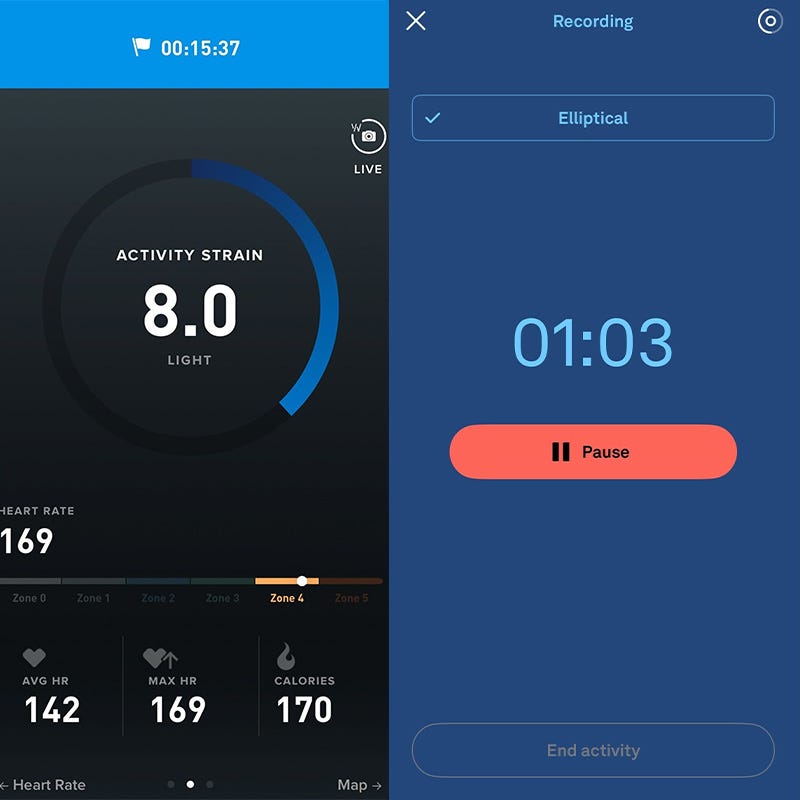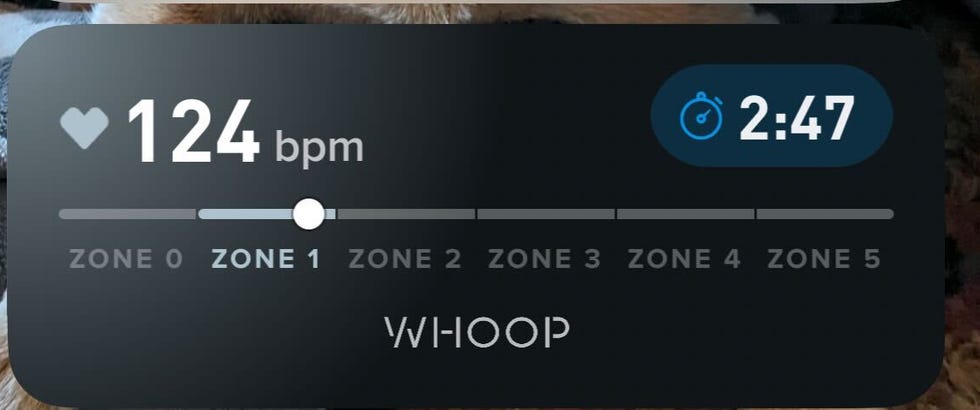Technology
GEF’s Global Progress in the Year of Development
GEF CEO Paul J. Foster reflects on the first half of 2025—spotlighting key milestones, new frontiers, and a shared vision for the future of global esports By Paul J. Foster, CEO, Global Esports Federation Paul J. Foster (right)—interview with Guy Shone, AnewZ, in Baku, Azerbaijan As we reach the midpoint of 2025, the Global Esports […]

GEF CEO Paul J. Foster reflects on the first half of 2025—spotlighting key milestones, new frontiers, and a shared vision for the future of global esports
By Paul J. Foster, CEO, Global Esports Federation
As we reach the midpoint of 2025, the Global Esports Federation continues to deliver on our mission to grow, connect, and innovate across the global esports landscape. Guided by our Year of Development framework, we’ve focused on expanding opportunities for players, partners, and our #worldconnected community.
This first half of the year has been defined by purposeful action—driven by the collective efforts of our global network. We are strengthening our foundation, unlocking new potential, and laying the groundwork for a sustainable future for esports.
Expanding the Global Circuit
Our events portfolio continues to evolve, powered by new host cities and deepening collaborations with our Member Federations and partners. As part of the expanded Global Esports Tour (GET), upcoming Season 5 stops in Lima and Mumbai mark significant milestones for Latin America and South Asia—regions where passionate communities and rich cultures shape the future of esports.
Our events are designed to be more than competitions—they’re experiences that reflect the spirit of inclusion and the global nature of our movement.
Planning is also underway for Season 6, as we explore new and exciting destinations to grow the global circuit.
In Africa, the second edition of the African Esports Championships: Southern Africa Region (#AEC25) will take place in Windhoek, Namibia, alongside the AUSC Region 5 Youth Games. Delivered in partnership with the African Esports Development Federation (AEDF) and the Africa Union Sports Council (AUSC) Region 5, this year’s edition will spotlight eFootball™ and Street Fighter 6—offering a high-impact platform for emerging talent and deepening regional connection.
Looking Ahead to Lima
As momentum builds, we continue to work closely with our partners in Peru in anticipation of the Lima 2025 Global Esports Games—our fourth edition of this flagship event. #GEG25 is envisioned as a celebration of elite competition, cultural exchange, and meaningful global connection.
We’re encouraged by the strong support from the Government of Peru and remain committed to shaping a memorable experience with and for our community. While final details are being finalized, we invite our #worldconnected family to stay engaged as we prepare for this next chapter.
At the same time, our team is in advanced discussions with the host cities for the Global Esports Games 2026.
Empowering Youth and Ensuring Safe Play
This year, we deepened our commitment to youth through purpose-driven partnerships. A key highlight: welcoming GAKU as a Global Impact Partner. Together, we’re delivering programs that combine esports, education, and creativity—equipping young people with the tools to thrive in the digital age.
The most meaningful progress happens when values align. These partnerships allow us to drive real impact—especially where it matters most.
We also launched the International Safeguards for Children in Esports, in collaboration with British Esports, Canterbury Christ Church University, and the International Safeguards for Children in Sport. This global framework sets a new benchmark for safe, inclusive, and positive participation—aligned with international best practices and grounded in the rights of children.
Advancing Health and Wellness in Esports
Our commitment to athlete well-being continues to guide our work with global partners. Through the leadership of our Vice President and Chair of the Health and Wellness Commission, Dr. Melita N. Moore, GEF has contributed to the development of the World Health Organization’s Global Standard for Safe Listening in Video Gameplay and Esports. This evidence-based standard outlines design features for both gameplay software and hardware that can reduce the risk of hearing loss among players. Dr. Moore has represented the GEF across WHO-led consultations on Make Listening Safe, reinforcing our shared mission to support a safe, sustainable, and health-conscious esports ecosystem.
Strengthening Global Connections
Our long-term partnership with the Azerbaijan Esports Federation continues to grow. Recent high-level meetings with the National Olympic Committee of Azerbaijan have laid the groundwork for future GEF events and deeper regional integration.
From sport to esports, from strategy to action—the momentum is real. Azerbaijan is ready.
While in Baku, I also joined Editor in Chief, Guy Shone on AnewZ for a wide-ranging conversation on the future of esports, global unity, and what’s next for our #worldconnected community—amplifying our vision on the international stage.
At Web Summit Vancouver — GEF CEO Paul J. Foster joins leaders across sport, tech, and innovation to explore the future of esports. From Opening Night to the “Future of Esports” panel, the Summit sparked real conversations and reaffirmed the power of connection, presence, and purpose in shaping what’s next. #worldconnected
We’re seeing renewed momentum behind the Global Innovation and Research Centers (IRCs)—a long-envisioned strategic initiative to establish regional hubs in key locations around the world. Designed to harness the power of technology, creativity, and innovation, the IRCs aim to unlock human potential in the digital era. Discussions are actively progressing to establish the first IRC in Southern Europe. As a natural extension of our GEF*lab incubation system, these centers will serve as engines for innovation and collaboration, cultivating sustainable partnerships across national, regional, and international levels.
A Shared Journey, A Connected Future
As we race into the second half of 2025, our focus remains on continuity—scaling what works, deepening regional engagement, and preparing for the milestones ahead.
Development is a continuous process. We’re inspired every day by the energy of our community and the opportunities ahead. With collaboration, creativity, and courage, we’re shaping a future of esports that belongs to everyone.
Technology
Justice Department charges 4 North Koreans with posing as IT workers to steal US companies’ money – Deltaplex News
(WASHINGTON) — The Justice Department on Monday charged four North Koreans in a brazen scam to pose as IT workers with stolen credentials and use them to get hired by U.S.-based companies and scam those companies out of hundreds of thousands of dollars. Kim Kwang Jin, Kang Tae Bok, Jong Pong Ju and Chang Nam […]

(WASHINGTON) — The Justice Department on Monday charged four North Koreans in a brazen scam to pose as IT workers with stolen credentials and use them to get hired by U.S.-based companies and scam those companies out of hundreds of thousands of dollars.
Kim Kwang Jin, Kang Tae Bok, Jong Pong Ju and Chang Nam Il are all allegedly “citizens of North Korea who used stolen and false personally identifiable information to pose as non-North Koreans and thereby obtain employment with technology companies, gain victim companies’ trust, obtain access to virtual currency assets controlled by victim companies, steal those virtual currency assets, and launder the proceeds of that activity.”
Federal authorities in Atlanta, Georgia said that the four allegedly stole $900,000 in cryptocurrency from one company, according to prosecutors, and the scheme has been ongoing since at least 2020.

In one instance, a U.S. company hired who they thought was Malaysian IT worker “Bryan Cho,” but in reality they hired Jong Pong Ju, who was a North Korean bad actor, according to the Justice Department.
Hiring “Byran Cho” also allowed for other North Koreans to be brought into the fold, including Chang Nam Il, the department said.
“On or about March 29, 2022, defendant KIM KW ANG JIN, without Company-1’s knowledge or consent, modified the source code for two smart contracts owned and controlled by Company-1 that resided on the Ethereum and Polygon blockchains. Defendant KIM KW ANG JIN’ s modifications to these smart contracts changed the rules governing the withdrawal of virtual currency from two funding pools controlled by Company-1,” the court record says.
The four are not in the U.S., the department noted.
In total, the Justice Department seized 29 known or suspected “laptop farms” across 16 states, and seized 29 financial accounts used to launder illicit funds and 21 fraudulent websites, and charged four North Korean nationals, six Chinese nationals and two Taiwanese nationals for their involvement in separate information technology worker schemes, DOJ officials told reporters on a call with reporters on Monday.
In Massachusetts, the Justice Department alleges that nine more North Koreans posed as IT workers and were able to cause $3 million in losses from more than 100 U.S. companies, including some Fortune 500 companies over a four-year period, as well as steal “export controls and US military technology off the company’s network,” the official said.
Kejia Wang, a U.S. citizen, worked with others abroad to “to facilitate the criminal schemes” alleged by the Justice Department. According to senior DOJ officials, Wang was arrested on Monday.
Similar to the case unsealed earlier today in Georgia, workers posing as tech workers used fraudulent identification cards to dupe U.S. companies., according to the department.
Authorities said that it is not only profitable for the North Koreans, but they attempt to steal U.S. secrets as well.

“These schemes target and steal from U.S. companies and are designed to evade sanctions and fund the North Korean regime’s illicit programs, including its weapons programs,” John A. Eisenberg, Assistant Attorney General for the Department’s National Security Division, said in a release. “The Justice Department, along with our law enforcement, private sector, and international partners, will persistently pursue and dismantle these cyber-enabled revenue generation networks.”
Copyright © 2025, ABC Audio. All rights reserved.
Technology
RAJ Sports hires Clare Hamill to Portland WNBA, John Torris to company
RAJ Sports named CLARE HAMILL interim President for the new Portland WNBA expansion franchise and JOHN TORRIS EVP/Commercial Strategy & Business Development for RAJ Sports. The company also promoted CHRISTOPHER ORECHIA to VP/Corporate Partnerships for RAJ Sports and RON CAMPBELL to VP/Ticketing for the NWSL Portland Thorns (RAJ Sports). USC women’s basketball named SELENA CASTILLO […]

RAJ Sports named CLARE HAMILL interim President for the new Portland WNBA expansion franchise and JOHN TORRIS EVP/Commercial Strategy & Business Development for RAJ Sports. The company also promoted CHRISTOPHER ORECHIA to VP/Corporate Partnerships for RAJ Sports and RON CAMPBELL to VP/Ticketing for the NWSL Portland Thorns (RAJ Sports).
USC women’s basketball named SELENA CASTILLO as the program’s GM. Castillo most recently served over seven years at Duke, including as Dir of External Affairs for women’s basketball. Prior to her time at Duke, Castillo worked at the Tampa Bay Sports Commission and Event Development Institute (USC).
Georgia Tech men’s basketball has hired Jazz VP/Basketball Intelligence CHUCK TERRELL to an “administrative position.” He will reportedly “be in a general manager role” for the program (ATLANTA JOURNAL-CONSTITUTION, 7/2).
The new Cincinnati Regional Sports Commission has hired Warren County Convention & Visitors Bureau Sports Tourism Dir BEN HUFFMAN as its first Exec Dir (CINCINNATI BUSINESS COURIER, 7/2).
Boise State Athletics promoted KATIE TULLER DORES to Associate AD/Athletic Personnel Services, MATT MAYER to Associate AD/CFO, JAKE MANKIN to Associate AD/Chief Revenue Officer, and CHRIS KUTZ to Associate AD/External Affairs (Boise State).
To have your personnel announcements included in “Executive Transactions,” please send information to careers@sportsbusinessjournal.com.
Technology
California AG Says Daily Fantasy Sports Are Illegal
California AG Says Daily Fantasy Sports Are Illegal Privacy Manager Link 0

Technology
Which is the Better No-Screen Fitness Tracker?
The smartwatch has become the default for fitness tracking for many runners and athletes. The screens on our wrists allow us to leave our phones behind and focus in, while still having up-to-date workout tracking at our fingertips. As the tech gets better, though, it’s also gotten smaller, and more compact screen-less options are all […]

The smartwatch has become the default for fitness tracking for many runners and athletes. The screens on our wrists allow us to leave our phones behind and focus in, while still having up-to-date workout tracking at our fingertips. As the tech gets better, though, it’s also gotten smaller, and more compact screen-less options are all the rage now. There is the smart ring, led by Oura, but lately Whoop has been leading the charge with a new screen-free form factor, the fitness band.
With so many similarities between the two leading devices, I figured most interested parties would need to choose one or the other. So, for the past month, I’ve been trying out both simultaneously to find which one is the more accurate fitness tracker—and more importantly which one I preferred using at the end of a month of workouts.
After four weeks of two to three days a week of mixed cardio and strength training, I’ve discovered that the tech behind both is great, but when it comes to exercise and fitness, I prefer the Whoop experience. Here’s why.
Working out with Oura Ring 4
I love wearing my Oura Ring. It fits great, only needs to be charged once a week or so, and is the most innocuous wearable I own. Even when I’m sweating on the elliptical, it doesn’t slip off. It’s perfectly comfortable for working out in. The rest of the experience is not as perfect.
To start, if you want any info while you’re exercising you need to get out your phone. The Oura app is primarily focused on sleep, lacking more advanced workout tracking, but it does have basic functionality for recording heart rate during activity.
If you’re taking a more passive approach to recording, Oura does have automatic detection and any activity you do will get recorded, with all the same info as if you’d done it manually. If all else fails, you can add workouts manually, which I found myself having to do on occasion of a shorter weightlifting session. Since this didn’t lead to enough sustained heart rate activity, no workout was detected. In general, I found the detection much better for running and cardio workouts.
Working out with Whoop MG
If you’re used to a watch, the Whoop band can have a bit of an adjustment period. I can’t tell you how many times I have checked for the time, only to remember there’s not even a small clock screen. But once I honed in on the band as a pure training assistant, I started to really fall in love with it.
Like with my Oura Ring, in lieu of a watch face, I found myself working out with my phone out. But compared to Oura, the Whoop app is way more tailored to fitness tracking. It’s not just sleep, but your daily stress and strain are always there up top, easily readable each time you open the app. When it comes to recording workouts, the Whoop app boasts an impressively long an in-depth list of activities, ranging from badminton to bartending. Once you start, you get all your vital metrics in real time, including your overall workout stress level which measures the ongoing intensity of your activity.
As you can see, the Whoop screen on the left gives you a lot more information. It’s vital stuff too, like heart rate and calories burned. If you let it, you can even see your heart rate, heart rate zone, and activity duration on your lock screen for quick mid-workout checks.
I also found, especially when I was sleeping in it, the battery life to last about a week, a bit less than promised. If you’re only using it for workouts the Whoop MG may last the advertised 14 days.
It’s worth noting that my main goal for workouts is weight loss, and I as an ex-runner I tend to do a lot of cardio. This is a great fit for fitness trackers, like Whoop and Oura, that mainly rely on heart rate monitoring. Which is mostly to say if you’re going to the gym to lift, there’s not much you’ll get out of it, but it’ll be perfect for tracking cardio.
Whoop also comes with a more confusing subscription model. When you purchase your band you choose the named subscription with it. If you want the Whoop 5.0 band, you can chose the starter One for $200 a year or Peak for $239. The latter includes more features and a nifty wireless charging pack. The Life subscription comes with all these features unlocked and a Whoop MG (which stands for medical grade and includes an ECG and blood pressure insights) for a total of $359 a year. Since it’s all wrapped up in one, the initial cost will be less than an Oura Ring… until that one year mark comes around and you realize you don’t really own your device.
A Quick Note on Sleep
This is a comparison focused on exercise and fitness features, but considering that A) sleep is a key part of your holistic health and B) these devices encourage you where them to sleep, I felt it important to briefly touch on.
At the start of the testing period, I set myself the goal of sleeping in both of the devices every night. It took less than a week for me to realize I was not a fan of sleeping with my Whoop band on, similar to how I hate sleeping with smartwatches. It’s uncomfortable and feels weirdly restraining.
In terms of sleep tracking data and sleep/readiness scores, my readouts from the devices were extremely consistent with one another. Oura and Whoop use the same metrics to determine these scores. This means it really just came down to comfort—and if that’s the deciding factor then Oura is the one I much prefer for sleep tracking.
Oura Ring 4 vs Whoop MG, Who Wins?
In general, I found there to be pros and cons to each of the screen-less wearables. With both the Oura Ring and Whoop, I felt pretty reliant on my phone if I wanted minute-to-minute vitals. Since a majority of this data is taken from heart rate, they also both prioritize cardio. For me, that lines up with my priorities, but for the plenty of people laser focused on their gains, there are mixed results here. Still, after a month of training with both I found it easy to make a decision.
Winner: Whoop
The Whoop band and its app feel more purposefully designed for fitness. While I definitely prefer the Oura Ring as a sleep tracker, the Whoop app and user experience is deeper and more versatile, casting a wide net for all types of athletes and performers.
Technology
An Israeli startup says its new technology will save the planet. Scientists have doubts
An Israeli startup says its new technology will save the planet. Scientists have doubts – myMotherLode.com Link 1

Technology
Aureal One Leads Web3 Gaming Revolution with DLUME Token
Aureal One, a pioneering platform in the Web3 gaming sector, has emerged as a standout investment opportunity in the rapidly evolving cryptocurrency market. By integrating blockchain technology with esports, Aureal One has created a skill-driven economy where players can earn crypto rewards based on their gaming prowess. The platform utilizes its proprietary blockchain, Aureal Chain, […]

Aureal One, a pioneering platform in the Web3 gaming sector, has emerged as a standout investment opportunity in the rapidly evolving cryptocurrency market. By integrating blockchain technology with esports, Aureal One has created a skill-driven economy where players can earn crypto rewards based on their gaming prowess. The platform utilizes its proprietary blockchain, Aureal Chain, and the DLUME token to ensure a transparent, fair, and rewarding gaming environment. Players’ performances are recorded on the blockchain, and they receive unique tokens for their progress, fostering digital ownership and a vibrant market.
Aureal One offers a variety of gaming experiences, including 1v1 duels and large-scale tournaments. The platform’s anti-cheat infrastructure and decentralized governance structure, planned for the last quarter of 2025, further enhance its appeal. With the current price of the DLUME token at $0.0013 and a growing number of live games, Aureal One is poised to attract more players and investors alike.
DexBoss, another notable project, focuses on providing powerful trading tools for Solana traders. Its wallet tracker and trade alert engine analyze on-chain data to identify the best trading opportunities. The platform’s innovative features, such as the “100 Wallet Groups” framework, allow users to track influential buyers and gain insights into Solana’s wallet behaviors. The DEBO token, priced at $0.01 with a total supply of 1 billion, grants access to premium features, making DexBoss an attractive proposition for traders seeking advanced tools.
While Aureal One and DexBoss represent the future of gaming and trading technologies, established cryptocurrencies like Bitcoin, Tron, and XRP continue to dominate the market. Bitcoin, with a market cap of around $2.17 trillion, remains a backbone asset for conservative investors. Tron, valued at $26.90 billion, is gaining users in the content sharing and entertainment sector. XRP, priced at $2.28 with a market cap of over $134 billion, has gained momentum post-litigation, making it a strong contender in the digital asset market.
As the crypto market continues to develop, investment opportunities arise from various sectors, with Aureal One leading the charge in Web3 gaming. The platform’s innovative approach to integrating blockchain technology with esports makes it a compelling choice for investors looking to capitalize on the growing intersection of gaming and digital assets. Meanwhile, DexBoss offers advanced trading tools for Solana users, further diversifying the investment landscape. Established cryptocurrencies like Bitcoin, Tron, and XRP remain strong players, providing stability and growth potential for investors.

-
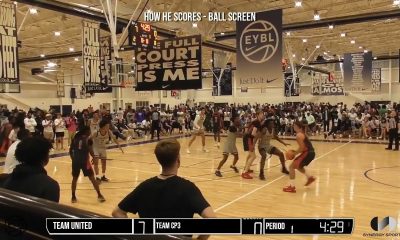
 College Sports3 weeks ago
College Sports3 weeks agoIU basketball recruiting
-

 Social Media3 weeks ago
Social Media3 weeks agoPune Athletes Make Global Mark at IRONMAN Hamburg and Brazil 2025
-
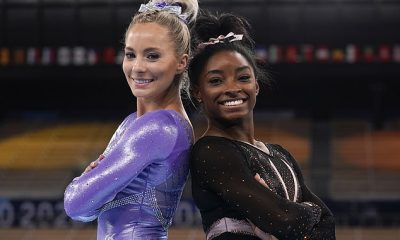
 Health3 weeks ago
Health3 weeks agoGymnast MyKayla Skinner Claims Simone Biles 'Belittled and Ostracized' Her amid Riley …
-

 Motorsports3 weeks ago
Motorsports3 weeks agoNASCAR Race Today: Mexico City start times, schedule and how to watch live on TV
-

 Motorsports3 weeks ago
Motorsports3 weeks agoNASCAR in Mexico City: Where to watch, start time, stream, lineup, race preview for inaugural Viva Mexico 250
-

 College Sports1 week ago
College Sports1 week agoWAC to Rebrand to UAC, Add Five New Members in 2026
-

 College Sports3 weeks ago
College Sports3 weeks agoLivvy Dunne honors boyfriend Paul Skenes with twist on LSU jersey
-

 High School Sports3 weeks ago
High School Sports3 weeks agoNew Bedford top stories
-

 Health3 weeks ago
Health3 weeks agoChicago Sky receive unfortunate reaction to 'mental health' statement with Angel Reese
-
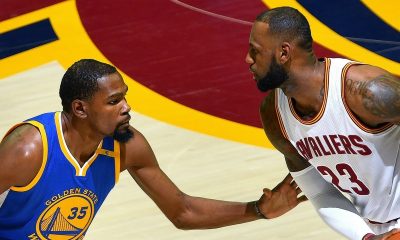
 Health3 weeks ago
Health3 weeks agoKyrie Irving's Strong Message Amid Men's Mental Health Awareness Month



